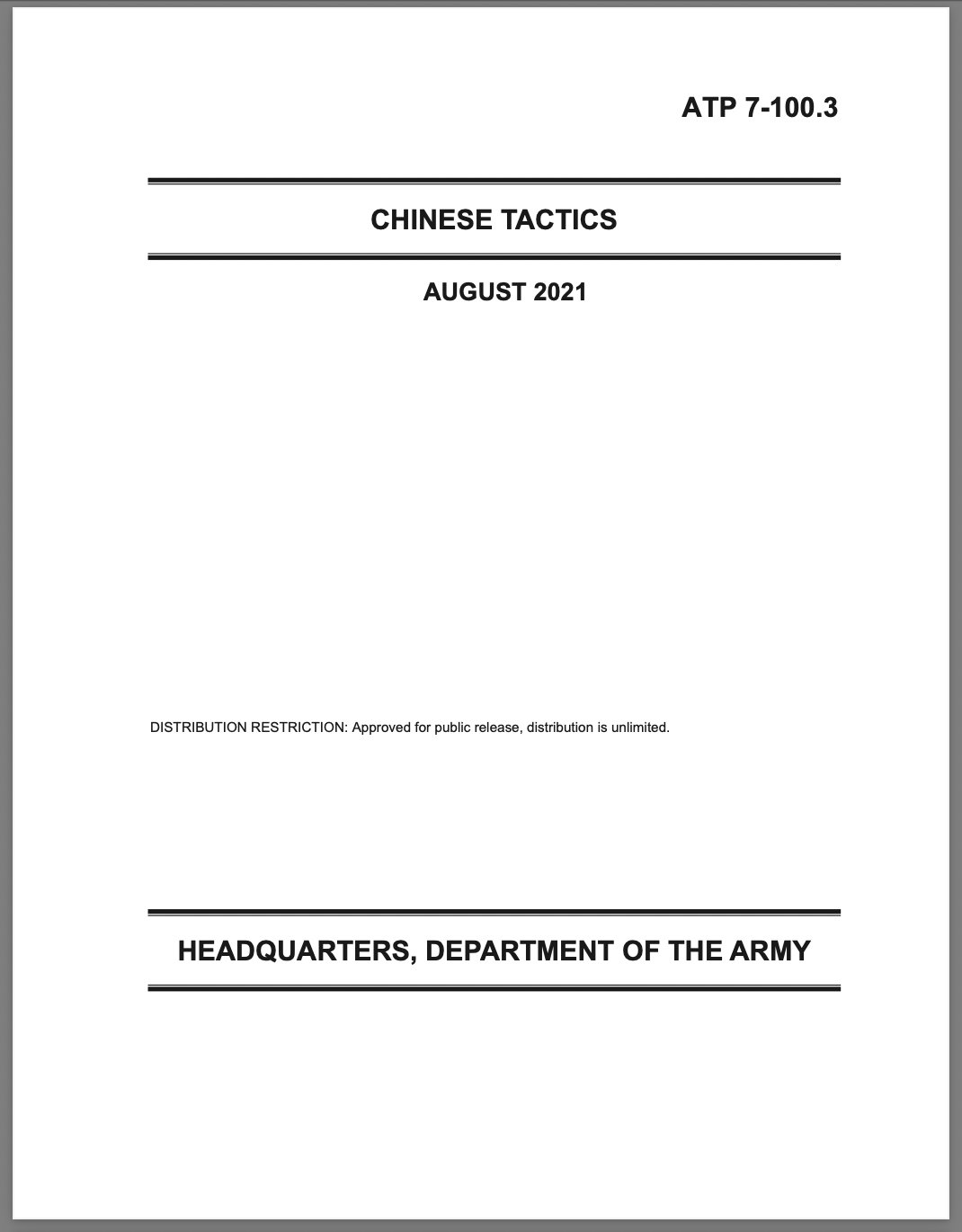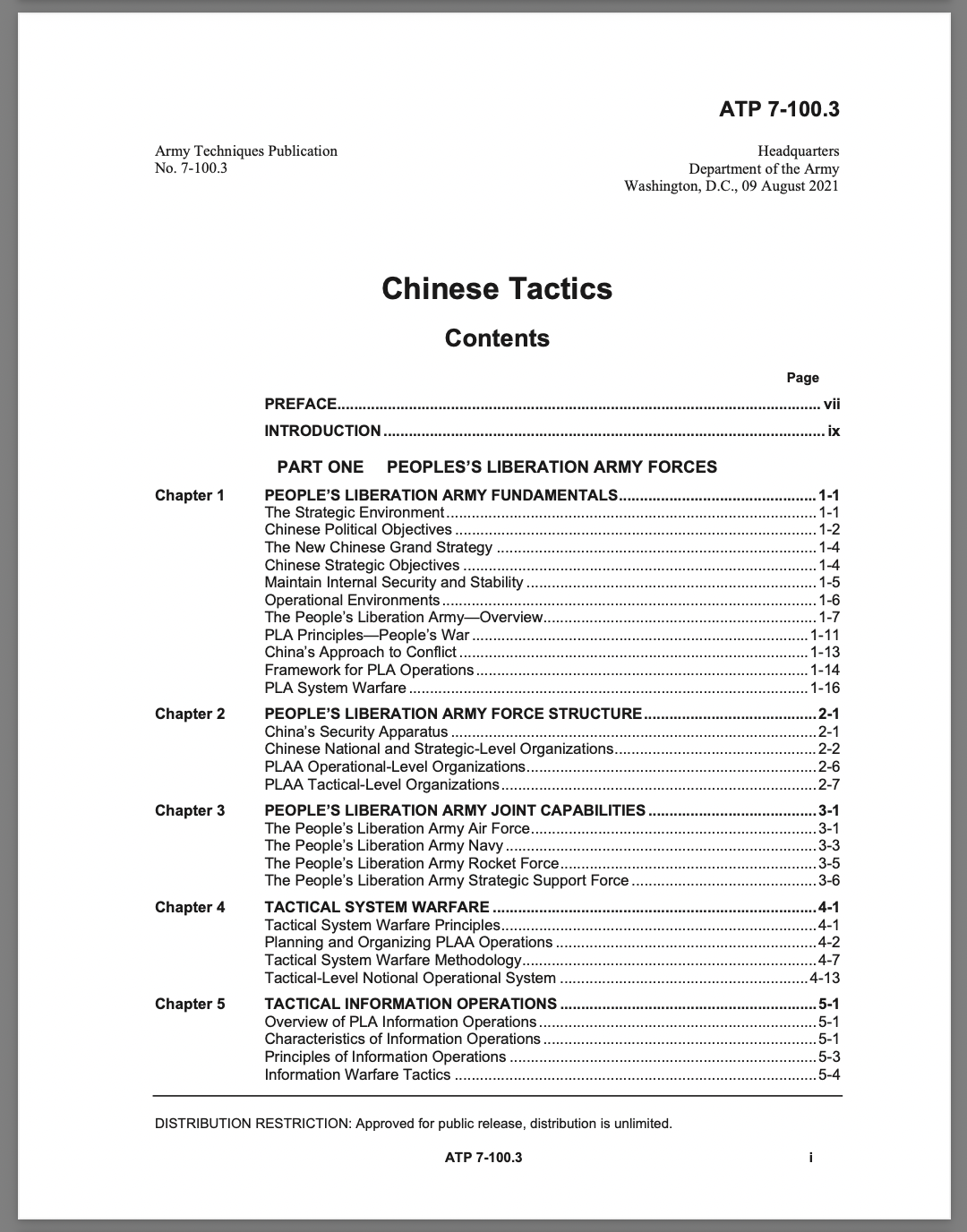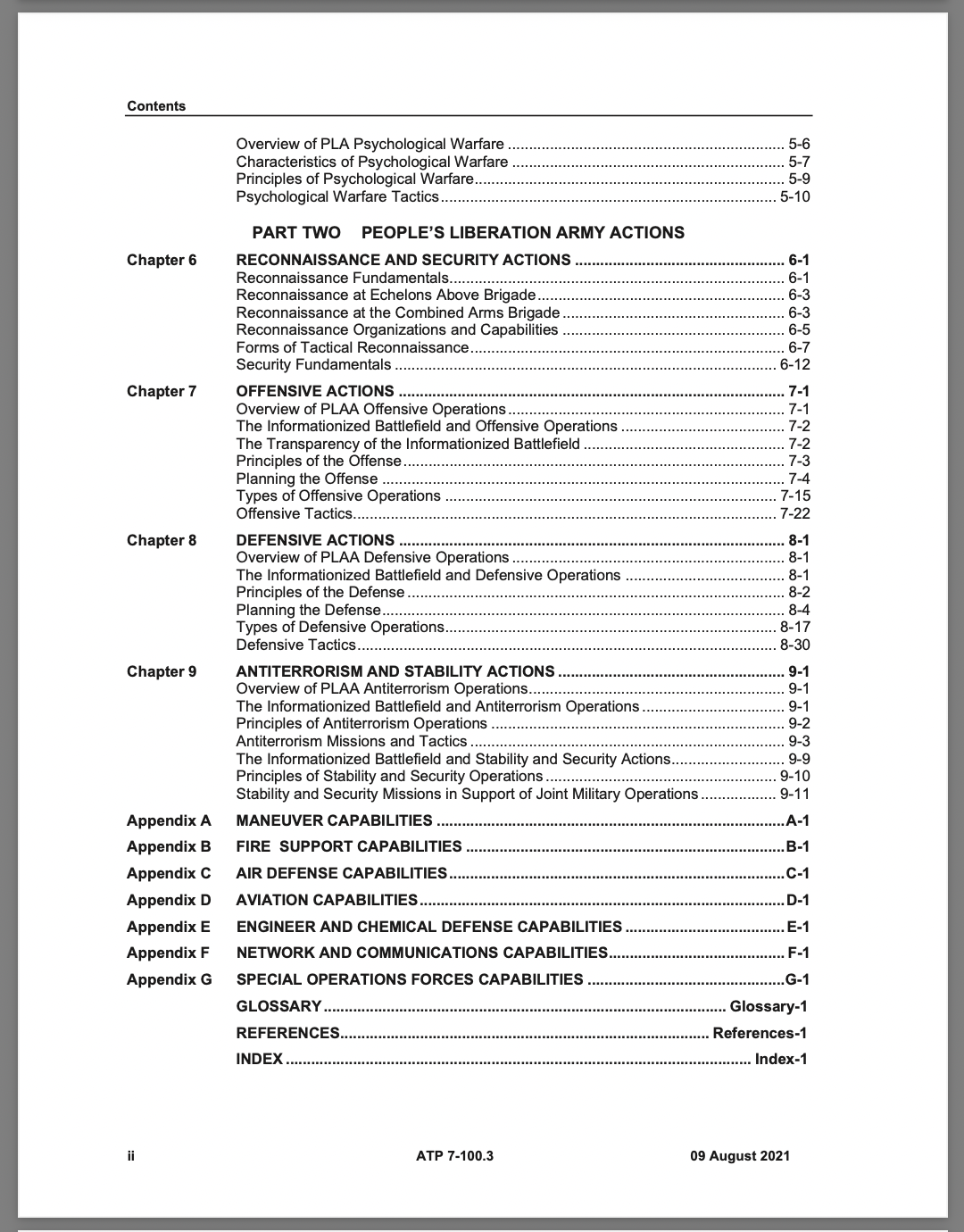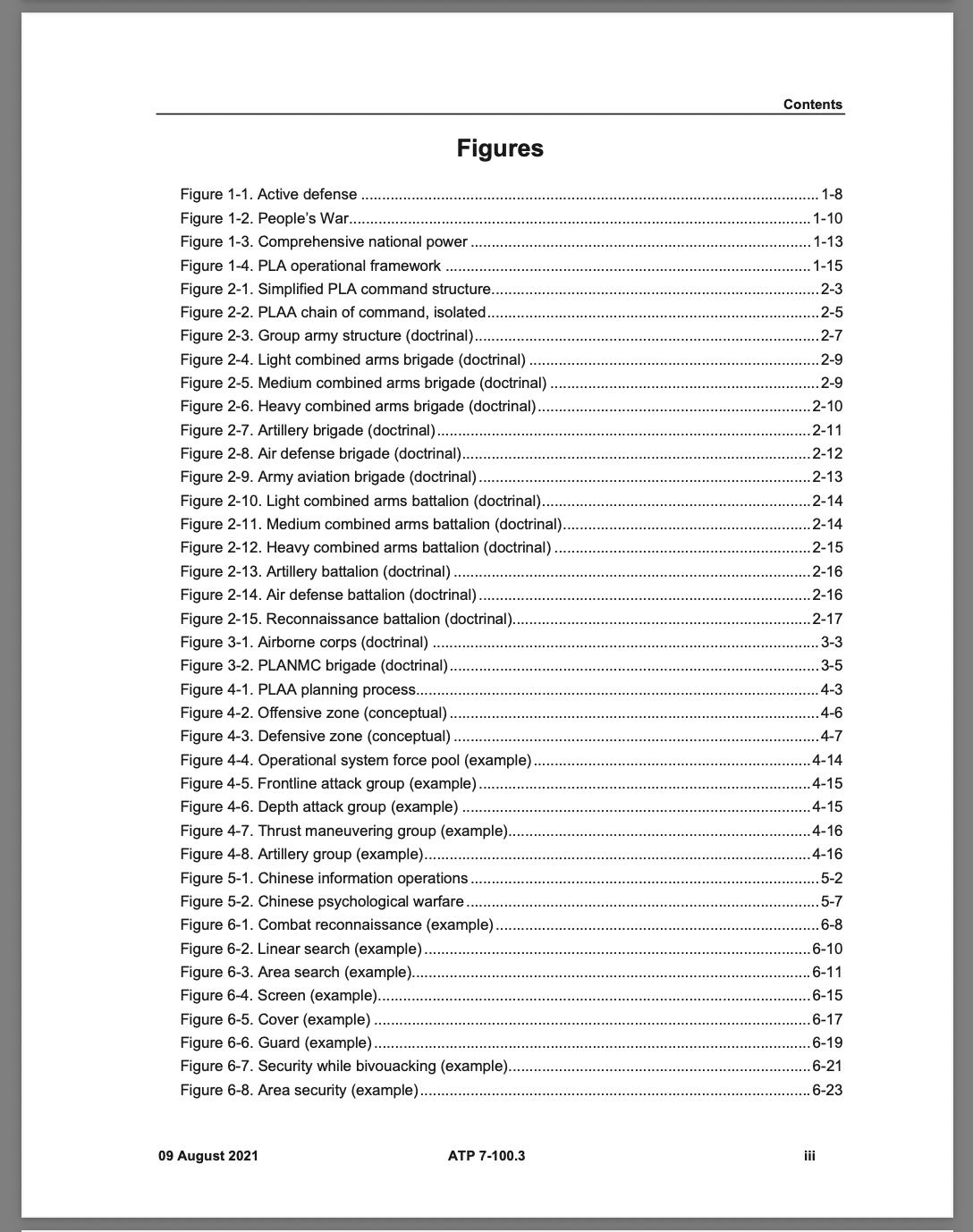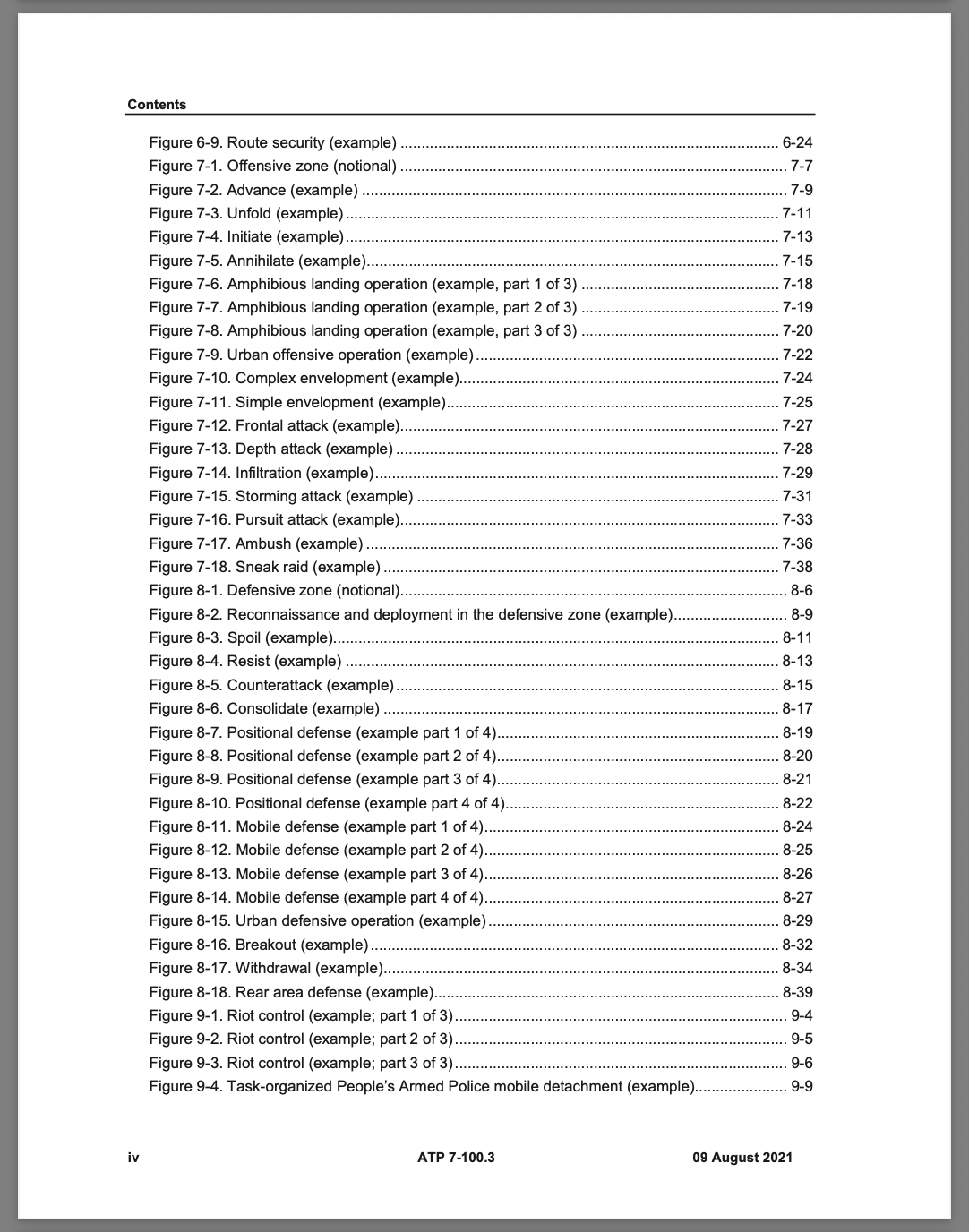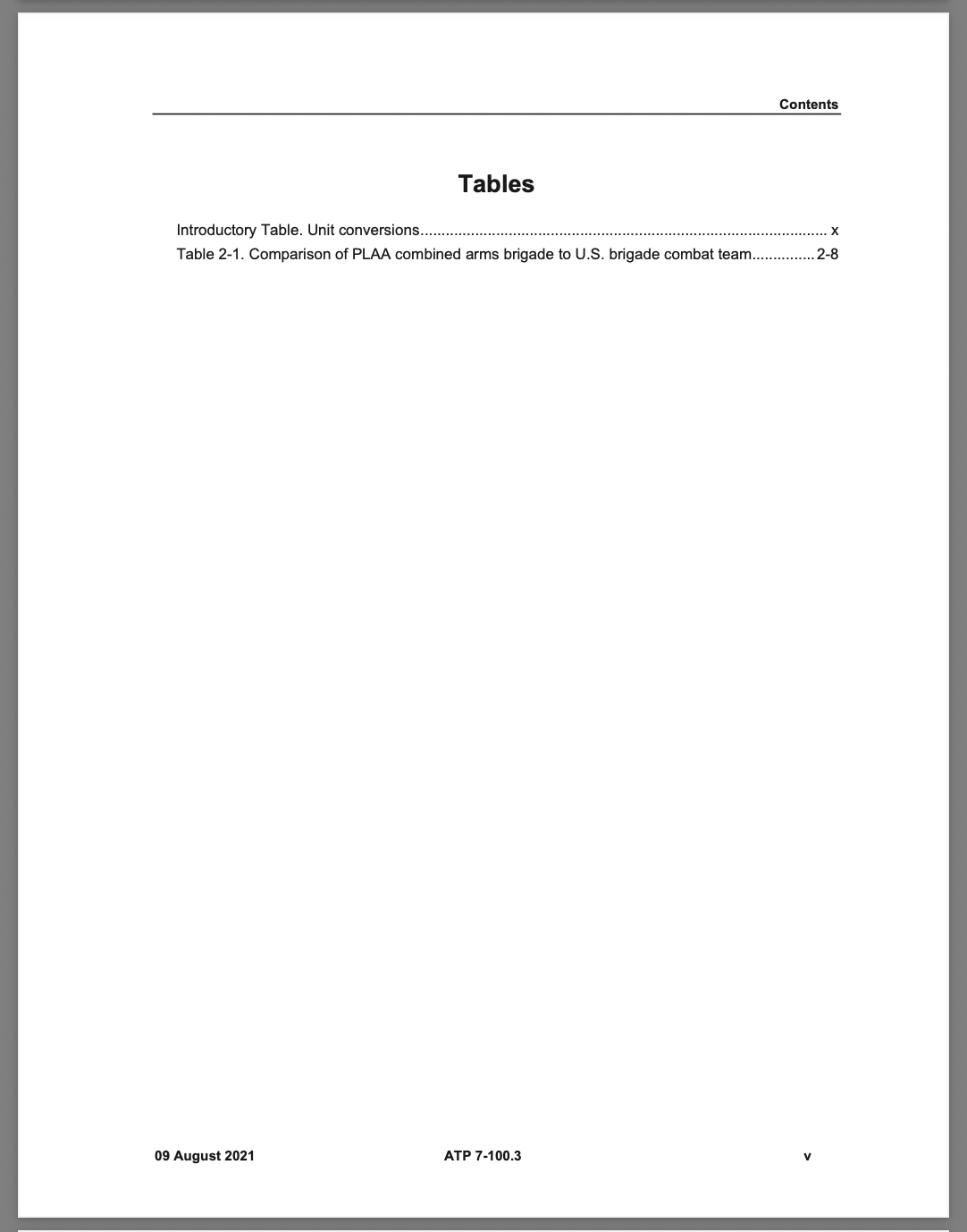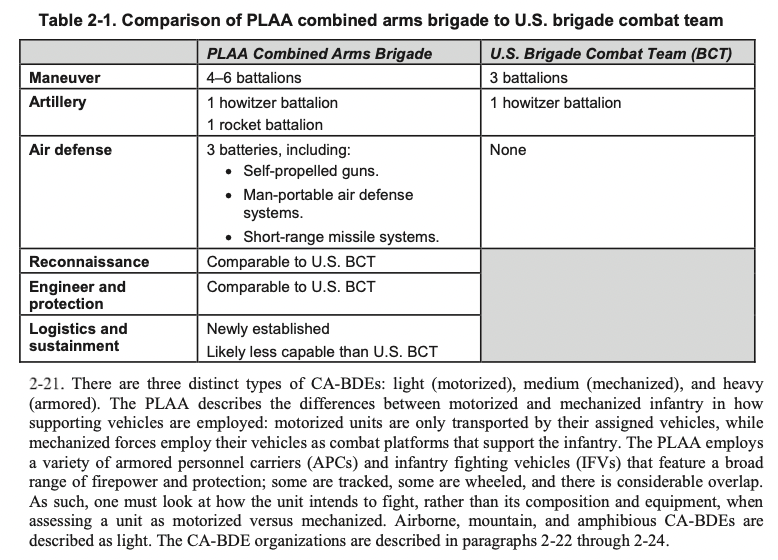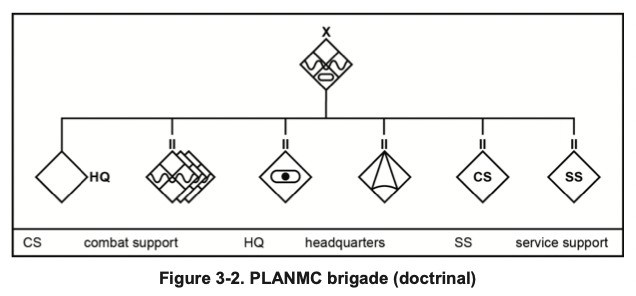“Chinese Tactics”—Read the New U.S. Army Report!
With straightforward Army thoroughness… a fascinating interpretation of how the PLA approaches warfare, particularly with regard to its ground forces!
Chinese Tactics, ATP 7-100.3 (Arlington, VA: Headquarters, Department of the Army, 9 August 2021).
Click here to read information on related publications.
BACKGROUND:
Steven Aftergood, “U.S. Army Views Chinese Military Tactics,” Federation of American Scientists, 23 August 2021.
How would China fight a war against the US?
A new US Army publication sets out to answer that question, offering a detailed account of the military tactics China could employ. See Chinese Tactics, Army Techniques Publication (ATP) 7-100.3, August 9, 2021.
The 250-page document is mainly intended to help provide a realistic basis for training of US forces. But in doing so it sheds some new light on China’s military forces, at least as they are perceived by US military observers. It is based primarily on open sources.
“This publication presents PLA [People’s Liberation Army] military theory largely as written and prescribed by the PLAA [PLA Army],” the manual says. “Real world practices of PLA units are . . . generally not included as part of the analysis underpinning this document.”
The description of Chinese military tactics is necessarily speculative to some extent. “The PLA has not participated in an active conflict in nearly half a century, so real-world applications are minimal. [But] available information on Chinese military training exercises and the few recent examples of conflict seem to indicate that PLA practices — including those of the PLAA — conform closely to its military theory.”
As for the command structure of the Chinese military, it “is complex and opaque to outsiders. . . . There are no fewer than ten different national-level command organizations in China, organized across at least three different levels of a complex hierarchy.”
“Deception plays a critical role in every part of the Chinese approach to conflict,” according to the document. “Rather than focusing on defeating the opponent in direct conflict — as most Western militaries do — [Chinese military] stratagems consider deception, trickery, and other indirect, perception-based efforts to be the most important elements of an operation.” … … …
CONTENT FROM PUBLICATION:
Introduction
ATP 7-100.3, as part of the U.S. Army 7-100 series and in support of AR 350-2, addresses the tactics, organization, and activities of the People’s Republic of China’s (PRC’s) military, the People’s Liberation Army (PLA). The PRC is a near-peer competitor to the United States, with significant political and strategic interests worldwide, though the PRC’s primary geographic focus is Eastern and Southeastern Asia and the Western Pacific. The PRC has developed significant capabilities in all domains: land, air, maritime, space, and cyberspace. Capabilities in specific operational environments include a number of different unit and system combinations able to challenge the combat power of U.S. and allied forces. The PLA represents a significant competitor to U.S. and allied forces, especially in the Western Pacific. This publication provides a doctrinal description of PLA tactics and organizations in order to facilitate robust, realistic, relevant, and challenging conditions in which to train U.S. and allied forces.
PART ONE—PEOPLE’S LIBERATION ARMY FORCES
Chapter 1 describes the strategic environment, operational environments, China’s political objectives, and its associated strategy. It then delves into China’s military forces: its philosophical underpinnings, principles, approach to conflict, operational framework, and system warfare.
Chapter 2 describes the PLA’s force structure for its land combat components, an overview of its theater- level capabilities, and a discussion of tactical-level units such as brigades and battalions.
Chapter 3 provides an overview of PLA joint capabilities that can affect tactical operations, including air forces, naval forces, rocket and missile forces, and specialized support forces.
Chapter 4 describes the PLA’s primary framework for operations: system warfare, planning processes, control measures, command posts, and combat groups.
Chapter 5 describes how the PLA approaches information operations, with an emphasis on actions at tactical echelons.
PART TWO—PEOPLE’S LIBERATION ARMY ACTIONS
Chapter 6 describes the PLA approach to reconnaissance, counterreconnaissance, and security in support of tactical operations at tactical echelons.
Chapter 7 describes PLA offensive operations at tactical echelons and how the system warfare approach is applied in these actions.
Chapter 8 describes PLA defensive operations at tactical echelons and how the system warfare approach is applied in in these actions.
Chapter 9 describes the PLA approach to stability operations at tactical echelons and how the system warfare approach is applied during stability actions.
APPENDIXES
Appendix A describes the capabilities and limitations of PLA maneuver forces: infantry, armor, marine, and airborne.
Appendix B describes PLA indirect fire capabilities, including mortars, tube artillery, and rocket artillery in support of group army and tactical operations; this includes an overview of integrated fires systems.
Appendix C describes PLA tactical air defense forces controlled by its land forces, including an overview of integrated air defense systems up to the group army echelon.

